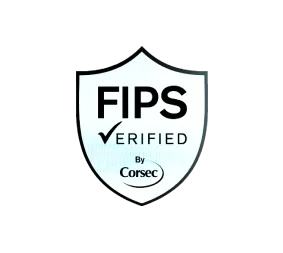Amazon EKS Anywhere is now available for bare metal servers and we couldn’t be more excited to announce that we've now extended our Palette platform to enable seamless integration and provide consistent lifecycle management and critical day 2 capabilities with a few clicks!
As more and more organizations are expanding their containerization and Kubernetes strategies beyond just public clouds and conventional virtualized data centers, bare metal and edge deployments are the next frontiers. Promising multiple benefits such as better performance, direct and more efficient access to hardware capabilities (such as GPUs for AI/ML processes), reduced operational complexity and cost with one layer less to manage (hypervisors).
Here at Spectro Cloud, we have been committed to making Kubernetes and cloud native development more accessible and manageable for our customers, to include challenging use cases including deploying Kubernetes on bare metal and edge locations. Last August, we added complete bare metal support for Palette, allowing our customers to easily deploy bare metal Kubernetes clusters and manage them exactly like they would in the cloud, uniquely overcoming the challenge of having to manage Kubernetes and the servers’ Operating Systems separately.
Today, we are thrilled to announce support for Amazon EKS Anywhere (EKS-A) for bare metal infrastructure. With Amazon EKS Anywhere for bare metal, users can easily create and operate Kubernetes clusters on their own on-premises bare metal servers, with default component configurations and automated cluster management tooling, consistent with Amazon EKS. Once deployed, importing an EKS-A bare metal cluster into Palette is just a few clicks away.
Palette builds on top of the core EKS-A capabilities to provide out-of-the-box support for day 2 operations, such as cost visibility and optimization, backups, security and compliance scans. It also allows users to extend the imported EKS-A clusters by deploying and managing the complete lifecycle of pre-validated application services, like monitoring, logging, authentication, service mesh and others.
Importing EKS-A bare metal clusters into Palette with a few clicks
Let’s take a look at how easy it is! Assuming you already have an EKS Anywhere cluster up and running, you can integrate it with Palette in five easy steps:
- In Palette, navigate to the Cluster page and click "Add New Cluster”.

- From the “Create New Cluster” modal, select “Import Cluster”.

- Specify a name, select "EKS-Anywhere" from the Cloud Type drop-down, and click "Create & Open Cluster Instance".

- You will be redirected to the cluster dashboard for your soon-to-be-imported cluster, with a sidebar opened detailing the final step.

- Simply execute the kubectl command from the sidebar against your EKS Anywhere cluster, sit back, relax and Palette will take it from there.
The cluster import process will take 2-3 minutes to complete. After the dust settles, the bare metal nodes will send a heartbeat to Palette and the cluster’s status will transition to “Healthy”. You’re all set!

Pop over to the “Nodes” tab for an overview of your bare metal node groups.

Critical Day 2 Operations Support
You’re now ready to perform day 2 operations such as security and compliance scans, cluster backups and upgrades, as well as manage quota controls, optimize for cost and get full visibility into health.
Cluster scans are created from your newly imported EKS Anywhere cluster's "Scan" tab.

Backups and Restores are handled on the "Backups" tab. Backups are configurable, including support for persistent storage disks, Kubernetes resources, and a schedule of your choosing.

Extending EKS-A bare metal clusters
In addition, with Palette's Cluster Profiles, you can extend your EKS-A Kubernetes clusters by adding readily-available, pre-validated open source or commercial integrations, on top of the EKS-A-default Kubernetes infrastructure (Operating System, EKS-D Kubernetes distribution, Cilium CNI). Users can select from a public repository of more than 50 packs, ranging from ingress, logging, monitoring, to security, service mesh, and more, or build their own tailor-made repository with their own! All layers are checked for compatibility and declaratively managed across their lifecycle with Palette conducting reconciliation loops every 2 minutes and self-healing if necessary.
All you need to do is define an “Add-on Cluster Profile” with the desired packs for each layer, navigate to your cluster’s “Profile” tab, then select “Attach Profile”.

Once the addon profile is attached, Palette will do the heavy lifting to ensure that each layer you select is provisioned and alert you in case there are updates or changes between the actual deployment and your Cluster Profile.
We are excited to be part of this Amazon EKS Anywhere launch and will continue to work with AWS to enable our customers to manage Kubernetes at scale anywhere, taking away the complexity and helping them navigate the cloud native ecosystem with confidence. In the meantime, learn more about Palette here and stay tuned for more exciting announcements coming soon!
.svg)


.webp)













.svg)

.webp)
